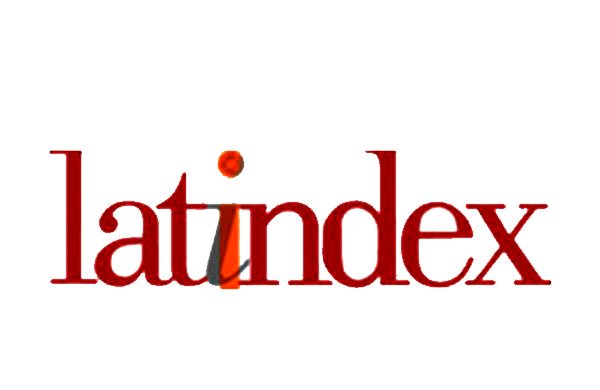Combinação de restrição calórica e treinamento resistido em camundongos Swiss machos
Combination of caloric restriction and resistance training in male Swiss mice
DOI:
https://doi.org/10.17765/2176-9206.2025v18e13000Palavras-chave:
Adiposidade, Fígado, Glicemia, Metabolismo dos carboidratosResumo
Este estudo analisou os efeitos biométricos e bioquímicos da combinação entre restrição calórica (RC) e treinamento resistido intervalado de alta intensidade em escada vertical em camundongos Swiss adultos. A intervenção alimentar (alimento livre, grupo ND; ou RC de 30%, grupo RD) durou 12 semanas. O treinamento dos grupos ocorreu nas semanas 5 a 12. O grupo RD teve ingestão relativa de alimento, massa corporal, perfil lipídico e metabolismo hepático de glicose menores do que o grupo ND. A adiposidade, o metabolismo sistêmico de glicose e o desempenho do grupo RD no treinamento não foram alterados pela RC combinada ao treinamento.
Downloads
Referências
1. Seo DY, Park SH, Marquez J, Kwak HB, Kim TN, Bae JH, et al. Hepatokines as a molecular transducer of exercise. J Clin Med. 2021;10:385. https://doi.org/10.3390/jcm10030385
2. Hardie DG. Organismal carbohydrate and lipid homeostasis. Cold Spring Harb Perspect Biol. 2012;4:a006031. https://doi.org/10.1101/cshperspect.a006031
3. Smith RL, Soeters MR, Wüst RCI, Houtkooper R H. Metabolic flexibility as an adaptation to energy resources and requirements in health and disease. Endocr Rev. 2018;39:489-517. https://doi.org/10.1210/er.2017-00211
4. François ME, Gillen JB, Little JP. Carbohydrate-restriction with high-intensity interval training: an optimal combination for treating metabolic diseases? Front Nutr. 2017;4:1-10. https://doi.org/10.3389/fnut.2017.00049
5. Mercken EM, Carboneau BA, Krzysik-Walker SM, De Cabo R. Of mice and men: the benefits of caloric restriction, exercise, and mimetics. Ageing Res Rev. 2012;11(3):390-8. https://doi.org/10.1016/j.arr.2011.11.005
6. Fragala MS, Caixia B, Chaump M, Kaufman HW, Kroll MH. Associations of aerobic and strength exercise with clinical laboratory test values. PLoS One. 2017;12(22):1-22. https://doi.org/10.1371/journal.pone.0180840
7. Anderson RM, Weindruch R. The caloric restriction paradigm: implications for healthy human aging. Am J Human Biol. 2012;24(2):101-6. https://doi.org/10.1002/ajhb.22243
8. Lee SH, Min KJ. Caloric restriction and its mimetics. BMB Rep. 2013;46(4):181-7. https://doi.org/10.5483/BMBRep.2013.46.4.033
9. Branquinho NTD, Cruz GHP, Borrasca CL, Alves LPS, Gomes CRG, Godoi VAF, et al. Early-onset obesity and food restriction alter hepatocyte metabolism in adult Wistar rats. Arch Physiol Biochem. 2017a;123(5):297-305. https://doi.org/10.1080/13813455.2017.1326942
10. Branquinho NTD, Cruz GHP, Silverio AC, Crepaldi LD, Yamada LA, Mariano IR, et al. Rat hepatocyte glucose metabolism is affected by caloric restriction but not by litter size reduction. J Pharm Pharmacol. 2017b;5:408-15. https://doi.org/10.17265/2328-2150/2017.07.003
11. Branquinho NTD, Loiola MS, Crepaldi LD, Yamada LA, Azevedo SC, Bataglini C, et al. Responses of the adult rat glucose metabolism to early life feeding, caloric restriction and refeeding. J Pharm Pharmacol. 2018;6:370-9. https://doi.org/10.17265/2328-2150/2018.04.008
12. Mariano IR, Yamada LA, Soares Rabassi R, Rissi Sabino VL, Bataglini C, Azevedo SCSF, et al. Differential responses of liver and hypothalamus to the nutritional condition during lactation and adult life. Front Physiol. 2020;11:553. https://doi.org/10.3389/fphys.2020.00553
13. Vismara MR, Furlan MM. Parâmetros biométricos como indicadores do grau de desnutrição em ratos sob restrição calórica desde o nascimento. Arq Cienc Saúde Unipar. 2007;11:3-8.
14. Yamada LA, Mariano IR, Sabino VLR, Rabassi RS, Bataglini C, Azevedo SS, et al. Modulation of liver glucose output by free or restricted feeding in the adult rat is independent of litter size. Nutr Metab. 2019;16:86. https://doi.org/10.1186/s12986-019-0413-0
15. Thyfault JP, Bergouignan A. Exercise and metabolic health: beyond skeletal muscle. Diabetologia. 2020;63:1464-74. https://doi.org/10.1007/s00125-020-05177-6
16. Muller GY, Amo AHE, Vedovelli KS, Mariano IR, Bueno GC, Furlan JP, et al. Resistance high-intensity interval training (HIIT) improves acute gluconeogenesis from lactate in mice. Am J Sports Sci. 2019;7:53-9. https://doi.org/10.11648/j.ajss.20190702.12
17. Muller GY, Matos FDO, Perego Jr JE, Kurauti MA, Pedrosa MMD. High-intensity interval resistance training (HIIRT) improves liver gluconeogenesis from lactate in Swiss mice. Appl Physiol Nutr Metab. 2022;47(4):439-46. https://doi.org/10.1139/apnm-2021-0721
18. Friedewald WT, Levy RI, Fredrickson DS. Estimation of the concentration of low-density lipoprotein cholesterol in plasma, without use of the preparative ultracentrifuge. Clin Chem. 1972;18:499-502.
19. Gaziano JM, Hennekens CH, O'Donnell CJ, Breslow JL, Buring JE. Fasting triglycerides, high-density lipoprotein, and risk of myocardial infarction. Circulation. 1997;96:2520-5. https://doi.org/10.1161/01.cir.96.8.2520
20. Strasser B, Spreitzer A, Haper P. Fat loss depends on energy deficit only, independently of the method for weight loss. Ann Nutr Metab. 2007;51(5):428-32. https://doi.org/10.1159/000111162
21. Bowe JE, Franklin ZJ, Hauge EAC, King AJ, Persaud SJ, Jones PM. Metabolic phenotyping guidelines: assessing glucose homeostasis in rodent models. J Endocrinol. 2014;222:G13-25. https://doi.org/10.1530/JOE-14-0182
22. Stumvoll M, Mitrakou A, Pimenta W, Jensen T, Yki-Jarvinen H, Renn W, et al. Use of the oral glucose tolerance test to assess insulin release and insulin sensitivity. Diabetes Care. 2000;23(3):295-301. https://doi.org/10.2337/diacare.23.3.295
23. Cederberg H, Laakso M. Obesity and type 2 diabetes. In: Bray GA, Bouchard C, editors. Handbook of obesity: epidemiology, etiology, and physiopathology. Boca Ratón: CRC Press; 2014. p. 539-48.
24. Després JP, Lemieux I. Abdominal obesity and metabolic syndrome. Nature. 2014;444:881-7. https://doi.org/10.1038/nature05488
25. Adeva-Andany MM, Perez FN, Fernandez FC, Donapetry GD, Pazos GC. Liver glucose metabolism in humans. Biosci Rep. 2016;36:1-15. https://doi.org/10.1042/BSR20160385
26. Ashworth W, Perez-Galvan C, Davies N, Bogle IDL. Liver function as an engineering system. AIChE J. 2016;62(9):3285-97. https://doi.org/10.1002/aic.15292
27. Rui L. Energy metabolism in the liver. Compr Physiol. 2014;4(1):177-97. https://doi.org/10.1002/cphy.c130024
28. Trefts E, Williams AS, Wasserman DH. Exercise and the regulation of hepatic metabolism. Progr Molec Biol Transl Sci. 2015;135:203-25. https://doi.org/10.1016/bs.pmbts.2015.07.010
Downloads
Publicado
Como Citar
Edição
Seção
Licença
Copyright (c) 2025 Saúde e Pesquisa

Este trabalho está licenciado sob uma licença Creative Commons Attribution 4.0 International License. A submissão de originais para a revista Saúde e Pesquisa implica na transferência da Carta Concessão de Direitos Autorais, pelos autores, dos direitos de publicação digital para a revista após serem informados do aceite de publicação.
A Secretaria Editorial irá fornecer da um modelo de Carta de Concessão de Direitos Autorais, indicando o cumprimento integral de princípios éticos e legislação específica. Os direitos autorais dos artigos publicados nesta revista são de direito do autor, com direitos da revista sobre a primeira publicação. Os autores somente poderão utilizar os mesmos resultados em outras publicações, indicando claramente a revista Saúde e Pesquisa como o meio da publicação original. Em virtude de tratar-se de um periódico de acesso aberto, é permitido o uso gratuito dos artigos, principalmente em aplicações educacionais e científicas, desde que citada a fonte. A Saúde e Pesquisa adota a licença Creative Commons Attribution 4.0 International.
A revista se reserva o direito de efetuar, nos originais, alterações de ordem normativa, ortográfica e gramatical, com vistas a manter o padrão culto da língua e a credibilidade do veículo. Respeitará, no entanto, o estilo de escrever dos autores. Alterações, correções ou sugestões de ordem conceitual serão encaminhadas aos autores, quando necessário. Nesses casos, os artigos, depois de adequados, deverão ser submetidos a nova apreciação. As opiniões emitidas pelos autores dos artigos são de sua exclusiva responsabilidade.


















